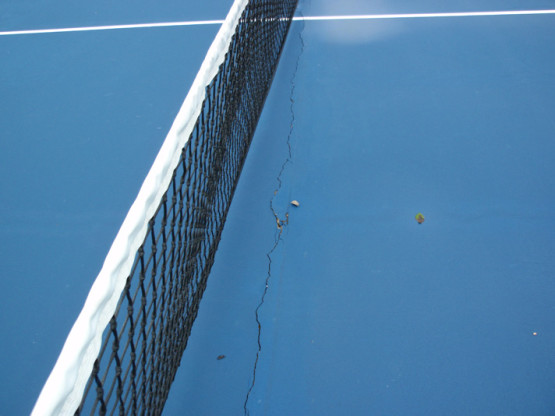Tennis Court Complex Forensic Engineering Investigation
CA was retained to perform a structural investigation and determine the cause(s) of the distress in two tennis court facilities located at a junior high school and high school in South Texas. To accommodate construction on expansive soil conditions, the structural system of the tennis courts was comprised of precast concrete hollow core planks (HCP) with a 3 inch concrete topping slab supported by cast-in-place reinforced concrete piers. Shortly after construction the owner noticed distress in the form of cracking and spalling along joints in the playing surface of the tennis courts. It was determined that the cracking was reflective cracking propagating from the longitudinal and transverse joints between HCPs which also resulted in localized spalling of the topping slab. CA’s investigation into the problem consisted of, among others, review and evaluation of construction related documents, review of third party repair options, review of expert reports, review of plans and drawings, detailed condition survey and elevation surveys, exploratory coring to assess the details of the jointing between HPCs, structural analysis of the tennis court system, design of a repair alternative, as well as several site visits to the structures. Through the forensic engineering investigation, CA was able to determine the cause(s) of the distress and provide the client appropriate remediation procedures.
CA was retained to perform a structural investigation and determine the cause(s) of the distress in two tennis court facilities located at a junior high school and high school in South Texas. To accommodate construction on expansive soil conditions, the structural system of the tennis courts was comprised of precast concrete hollow core planks (HCP) with a 3 inch concrete topping slab supported by cast-in-place reinforced concrete piers. Shortly after construction the owner noticed distress in the form of cracking and spalling along joints in the playing surface of the tennis courts. It was determined that the cracking was reflective cracking propagating from the longitudinal and transverse joints between HCPs which also resulted in localized spalling of the topping slab. CA’s investigation into the problem consisted of, among others, review and evaluation of construction related documents, review of third party repair options, review of expert reports, review of plans and drawings, detailed condition survey and elevation surveys, exploratory coring to assess the details of the jointing between HPCs, structural analysis of the tennis court system, design of a repair alternative, as well as several site visits to the structures. Through the forensic engineering investigation, CA was able to determine the cause(s) of the distress and provide the client appropriate remediation procedures.






